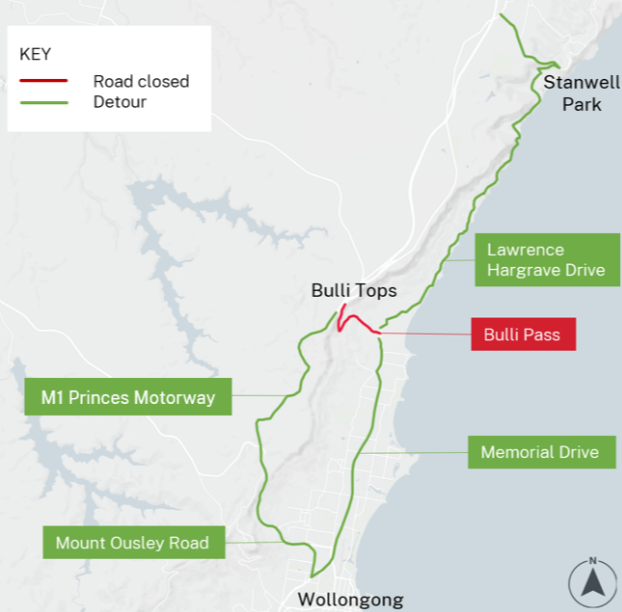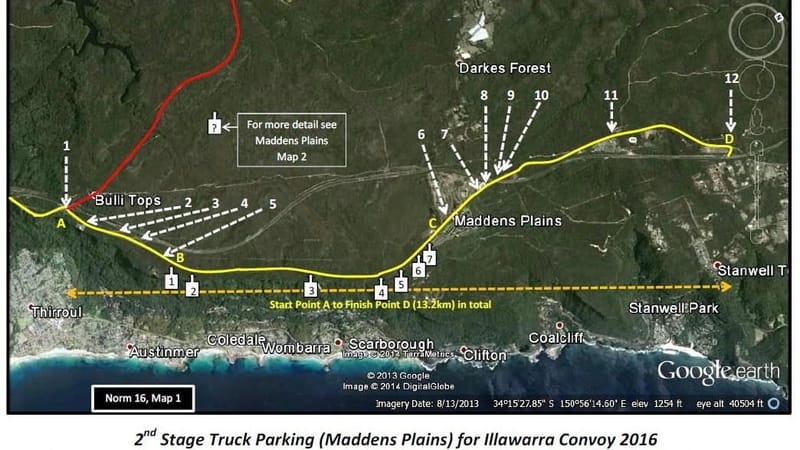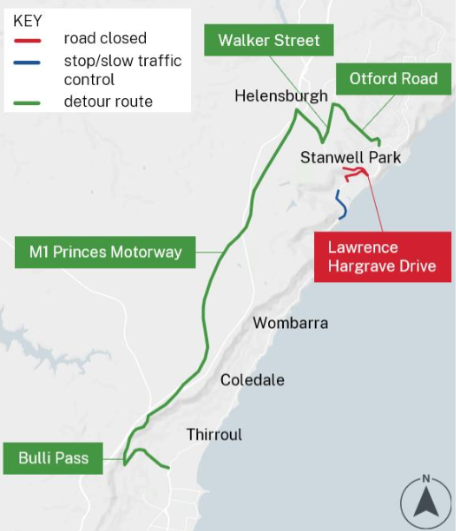Driven: 2025 Toyota Land Cruiser Prado 250 Series
The new-generation Prado (aka the 250 Series) is larger than the previous Prado and is now able to tow the industry-standard 3500kg, rather than the 3000kg the previous generation is limited to. The new Prado, now based on the same TNG-F chassis as...

The new-generation Prado (aka the 250 Series) is larger than the previous Prado and is now able to tow the industry-standard 3500kg, rather than the 3000kg the previous generation is limited to.
The new Prado, now based on the same TNG-F chassis as the LandCruiser 300 Series, the Lexus GX550 and the Toyota Tundra, has a blocky retro-style design as opposed to the softer style of Prados past.
The Altitude is the line-up’s second most expensive grade and, equipped with a locking rear differential, front sway bar disconnect system, and all-terrain tyres, it is marketed as the most off-road-capable of the range.
So, is the new Prado better than the old one?
How much does the 2025 Toyota Land Cruiser Prado 250 Series cost?
The 2025 Prado is available in five grades: GX, GXL (seven seats), VX (seven seats), Altitude and Kakadu (seven seats).
Our test vehicle, the Altitude, is a five-seater with a price-tag of $92,700 (excluding on-road costs). The accessories total of $13,014.51 (see full details below) pushes this Prado’s price as tested to $107,416.51 (excluding on-road costs).
What features do you get in the 2025 Toyota Land Cruiser Prado 250 Series?
Standard features in 2025 Toyota Land Cruiser Prado 250 Series include an 12.3-inch multimedia touchscreen system (with wireless Apple CarPlay and Android Auto), a 12.3-inch driver digital cluster, heated and ventilated leather-accented power-adjustable front seats, 360-degree camera system, three-zone climate control and a refrigerated centre console and more.
The 250 Series Prado has a locking rear differential, Kinetic Dynamic Suspension System, Multi-Terrain Selector and monitor, but its driver-assist tech does not include a tyre-pressure monitoring system, which is strange for a vehicle marketed as the line-up’s most off-road-suited variant.
Exterior paint choices include Glacier White, Eclipse Black, and Ebony – all standard – or optional paint jobs – Frosted White, Midnight Alloy, Dusty Bronze, Tanami Taupe, Ningaloo Blue – but optional paint plus two tone costs $1675.
Beyond the standard features, this test vehicle has the optional paint plus two tone ($1675) as well a raft of accessories:
- Kit, trailer wire, 12Pin: $411.30 RRP fitted
- EBC Kit (module): $211.50
- Wiring kit, brake controller (harness): $457.65 RRP fitted
- On-road towing kit: $270.70 RRP fitted
- Steel painted bull bar: $3853.60 RRP fitted
- Bull bar mount bracket kit: $315.00 RRP fitted
- Kit, bull bar harness: $535.90 RRP fitted
- Bash plate: $652.20 RRP fitted
- Kit, driving lamp bull bar harness: $228.15 RRP fitted
- Bull bar driving light fitting kit: $90.70 RRP fitted
- Driving light / lamp – 24 LED lightbar – external mount: $646.48 RRP fitted
- Winch: $3498.30 RRP fitted
- Winch spring: $621.80 RRP fitted
- Recovery point (front): $621.20 RRP fitted
- Recovery point (rear): $414.35 RRP fitted
- Floor mat set (all-weather mat), five-seater (2P second Row): $95.33 RRP fitted
- Cargo mat: $117.35 RRP fitted
The new Prado is 4990mm long (with a 2850mm wheelbase), 1980mm wide, 1935mm high, and it has a kerb weight of 2520kg. The wheel tracks are 1664mm at the front, and 1668mm at the rear.
As mentioned, the Prado now sits on the same platform as the 300 Series so this is not an insubstantial vehicle.
It now has a distinctive chunky, straight up and down, old-school look. The heritage square grille is big like everything else onboard: bulky wing mirrors, side steps, wheel arches and tyres add to the vehicle’s wide, squat stance.
The Prado has rectangular LED headlights in Australia, whereas other markets have the option of the round retro-style lights on their 250 Series.
Even with its styling changes and a new fresh all-encompassing look and feel the cabin of the Prado remains comfortably familiar. If you’ve ever spent any time in a LandCruiser then you know what I’m talking about.
Build quality is great, fit and finish impressive, the seats are supportive and the Prado’s cabin is an easy space in which to quickly become comfortable.
It has nice touches over and above the standard features fit-out of lower grades, such as a colour head-up display, digital rear-view mirror, heated steering wheel, power-adjustable steering column, heating and ventilation (front seats), eight-way power-adjustable driver seat and four-way power-adjustable for the front passenger, and genuine leather-accented upholstery throughout.
It has a deep refrigerated centre console, 14-speaker JBL sound system and a sunroof.
The 12.3-inch multimedia touchscreen dominates the layout upfront and is easy enough to operate, though I did have strife getting Apple CarPlay to work off my phone but the cause was my dodgy old charge cord.
There are six USB-C ports (but no USB-A) in the cabin, and a wireless charger in front of the auto shifter.
There is a 12V DC socket (upfront) and a 220V/100W socket in the rear cargo area.
The second-row is a 60:40 split-fold configuration and passengers there have access to aircon controls and directional vents as well as charge points.
Cargo space in the rear is listed as 954L with all seats in use, and 1895L if the second row is folded down. But the rear cargo area is compromised in its packability because of the raised floor (it’s lifted to house the 48-volt V-Active system’s battery) and also the bulky wheel arch housings. This cargo area is a narrow, shallow space.
The load limit for the raised floor is labelled as 60kg.
There are cupholders at the rear (atop the wheel arch housings), which are leftovers from the three-row layout.
The rear cargo area has a 220V/100W socket, four tie-down points, and a sliding cover to conceal anything that’s left in the back.
There is shallow underfloor storage space under the rubber matting
The rear space can be accessed from outside the vehicle through a rear window that is operated via a button on the rear door, or the whole rear door can be opened (it swings out from left to right) and locked in place.
It has an underslung full-size spare.
The new-generation Prado has the maximum five-star ANCAP safety rating from local testing in 2024.
As standard it has nine airbags and driver-assist tech includes AEB, adaptive cruise control, blind-spot monitoring, lane-keeping assist, front and rear parking sensors, and a 360-degree camera system.
It also gets Toyota's multi-terrain select off-road system, as well as Downhill Assist Control, and Crawl Control.
As mentioned earlier, it does not have a tyre-pressure monitoring system – which is on the wrong side of weird for an off-road-focussed 4WD wagon.
The Prado is covered by Toyota’s five year/unlimited km warranty.
Servicing is scheduled for every six months or 10,000km and, under Toyota’s capped-price servicing, each of the first 10 services costs $390.
The 48-volt battery set-up is covered by a five year/unlimited km warranty.
What is the 2025 Toyota Land Cruiser Prado 250 Series like to drive?
The 250 Series Prado has 2.8-litre four-cylinder diesel engine – producing 150kW and 500Nm – with Toyota’s 48-volt V-Active technology.
V-Active technology comprises a motor generator, 48-Volt battery and DC/DC converter which enables a stop/start system and this set-up is “designed to offer … improvements in driveability, performance, fuel efficiency [up to approximately 10 per cent, as claimed] and noise, vibration and harshness (NVH) compared with the standard 2.8-litre turbo-diesel engine”, Toyota reckons.
The 48-volt V-Active technology is essentially a stop-start system aimed at reducing fuel consumption, but it doesn’t add anything in terms of performance. What’s more, it takes up space in the engine bay and the system’s 48V lithium battery weighs 7.6kg, so the total weight of the system – likely about 60kg – has to be taken into account when you’re aiming to load within the Prado’s 580kg payload.
It has an eight-speed automatic transmission and a full-time dual-range four-wheel drive system.
This engine and auto combination is generally impressive – smooth, with plenty of torque across a wide rev range. It does, however, feel underpowered at times and it needs extra encouragement (heavy right boot) to get off the mark – but it otherwise yields a refined driving experience.
This new-generation Prado is well controlled, well composed in all scenarios and it really is nice to drive – even when you move from bitumen onto a dirt track and you can still keep up a fair bit of speed.
On the new chassis – that’s shared with the 300 Series LandCruiser and the Tundra – the Prado feels settled, nicely controlled and that well weighted steering has a even balance to it, especially when things become a lumpy and bumpy here and there on the dirt.
And most of the body roll evident in previous Prado iterations has been ironed out.
Past generations of Prados weren't ordinary in the off-road department and this new Prado has built on the tried-and-tested formula of previous generations: from its mechanical foundations, plenty of low-down torque through to its selectable driving modes (rock, sand, mud), the Prado is well equipped to tackle pretty much any off-road circumstance you can conjure with your over-active imagination.
Now, with the added bonus of new and improved suspension and a sway bar disconnect system, those factors have bolstered the vehicle skill-set already there.
There is plenty of driver visibility through the cabin to the front, to the sides and to the rear. So you can see everything. But as well as that, you also have the valuable addition of new driver-assist technology, including the multi terrain monitor camera system to make sure you can scrutinise any sight lines that you may not be able to see naturally from the driver's.
Steering feels sharp, it's well weighted and balanced and with a longer wheelbase on this chassis the Prado’s body always feels controlled and composed on fast dirt roads or through low-speed four-wheel driving situations.
The eight-speed automatic transmission is very clever and works well in conjunction with the aforementioned selectable driving modes, which tweak engine output, transmission response and throttle control.
The Altitude this is the most off-road-focused of the line-up and to that end it has a centre diff lock, rear diff lock and swaybar disconnect system – and all those elements add up to a nice bonus for a vehicle that has always been a decent off-road tourer.
So it has plenty going for it, but it’s not all good news though.
Toyota reckons it's V-Active system is aimed at fuel consumption but it also helps to produces a little more torque in off-road situations during which you may need extra torque.
But I've seen no real discernible difference in terms of performance, at those low speeds coming from that unit. It may be so seamless that you don't notice it at all, but I've only noticed that the Prado has performed as it should with that engine and that transmission on board.
I can't credit any improvements in performance to that 48 volt unit that's now on board.
The Prado is compromised by ground clearance and off-road angles more suited to a city-friendly vehicle then a purpose-built off-road vehicle.
Having said that, ground clearance is standard for a large four-wheel drive wagon – it sits at a listed 221mm off the dirt, which is satisfactory – and it has a wading depth of about 700mm.
The off-road angles of approach (32 degrees) and departure (17 degrees) are also standard for this class and size of vehicle, although especially in this Altitude, the departure angle has been somewhat compromised because of the underslung tyre and the addition of optional accessories (towing kit etc) on this test vehicle.
The Prado’s ramp-over angle is not listed but this new-generation Prado, with its longer 300 Series-size wheelbase, likely offers about 21 degrees.
The underbody does at times feel quite low and vulnerable to hitting the ground, even though underbody protection is quite substantial.
Its Toyo Tires Open Country A/T all-terrain tyres (265/70R18 116H) are perfectly fine tyres for most off-road scenarios, but you can always do more and go further with a better, more aggressive set of all-terrain tyres, especially some light truck construction rubber.
Its bulky sidesteps, while handy for getting in and out of the vehicle, are vulnerable to damage – rubbing against rocks through tight rutted climbs, that sort of thing.
But those aspects aren't deal-breakers, and a lot of the Prado’s shortcomings – ground clearance off-road angles, tyres – can be easily sorted out with a visit to Australia's aftermarket industry.
And despite those minor niggles, I did have fun driving this Prado.
For those looking to use their Prado as a towing platform, the good news is it can now legally tow the segment standard maximum of 3500kg (braked) and it has a pre-wired and integrated towbar.
Payload is listed as 580kg, GVM is 3100kg, and GCM is 6600kg.
Official fuel consumption of 7.6L/100km (on a combined cycle).
I recorded 10.4L/100km on test and that include a lot of high- and low-range 4WDing.
The Prado has a 110L fuel tank so, going by my on-test fuel-consumption figure, you could reasonably expect a driving range of about 1057km from a full tank.
It has a 17.4-litre AdBlue tank.
Is the 2025 Toyota Land Cruiser Prado 250 Series any good?
Real improvements in design, tech, comfort and capability have changed what was a solid off-road tourer and family conveyance into something better.
This new-generation Prado is the best iteration of this vehicle: roomy and refined, well equipped, nice to drive, and now with a welcome increase in towing capacity.
But ultimately it feels underdone, underpowered, and overpriced – Toyota had a chance to bring to market a real game-changer of a vehicle, but the Prado simply isn’t as good as everyone had hoped it would be.





